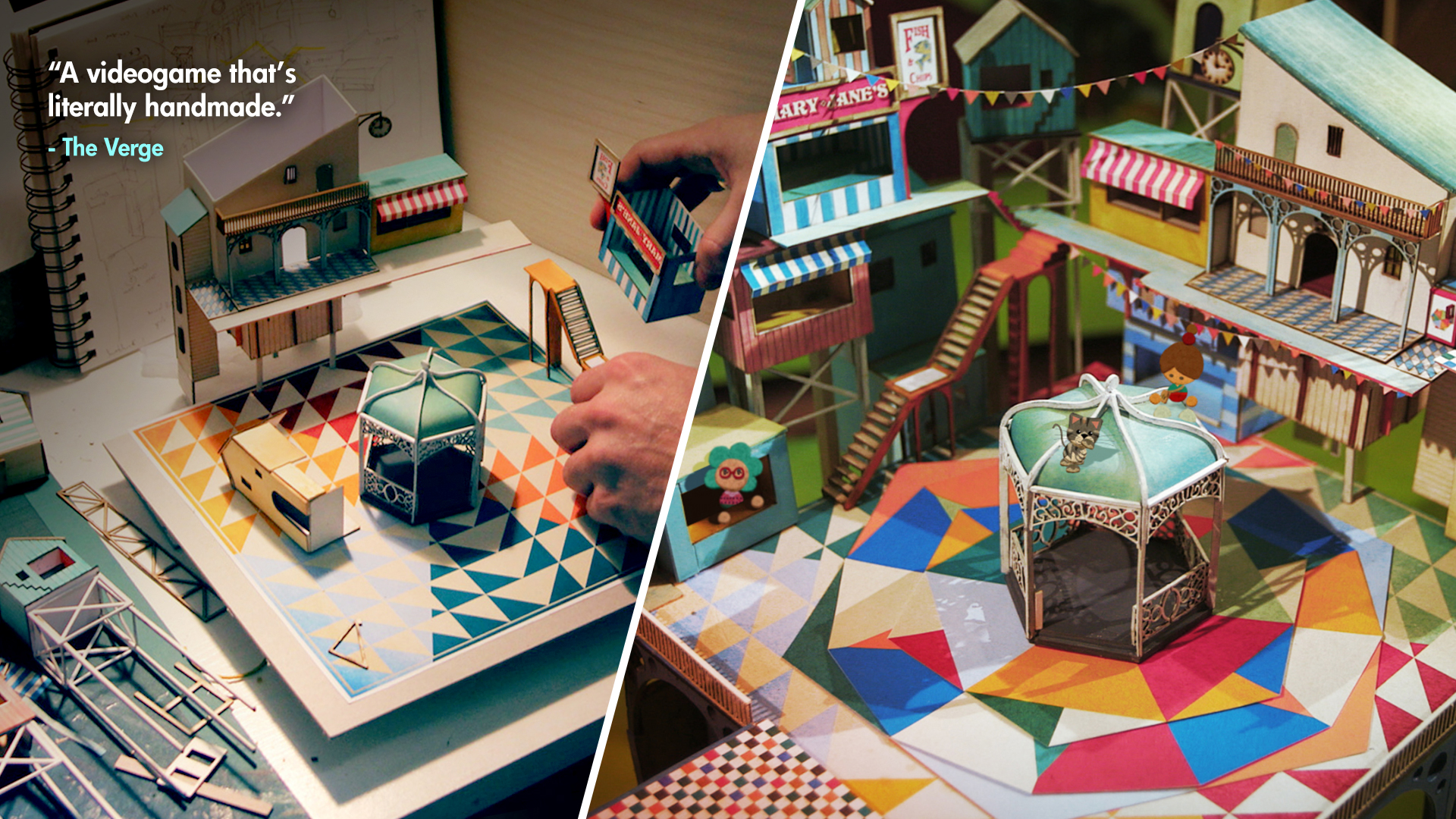


Architecture is a massive part of what Lumino City is about, and both myself and Luke are passionate about the way buildings and architecture can tell a narrative within a game environment. I think working closely with architect Catrina Stewart really influenced the design of the city, and she was an integral part of the game design process. Were there any key inspirations in the city/character design? Interestingly, we had never done stop-frame animation before until we did a couple of scenes using this technique in Lumino City, so that was all new to us. Myself and Luke, our co-director, have an animation background from before we formed State of Play seven years ago, so there are no surprises that there is a comparison. The game's design has much in common with animation, I guess mostly the stop-motion discipline in its backgrounds, its stages. If Lume was a starter for the visual style we knew we could deliver, Lumino City is a main course, dessert, cheese board, coffee, and wine all into one. We knew we were scaling up the game, which would mean a reduction in scale of the models, which in turn meant a need for new techniques with our model making. We started with a clean slate, production-wise, with Lumino City. We were so excited about the possibilities of the style we chose for Lume and we just wanted to embellish and learn from what had excited us about making it. Katherine Bidwell: To be honest, it never crossed our minds. Obviously a sequel to any game is likely to bear aesthetic similarities, but as striking as the look of Lumino City is-and it's bloody gorgeous-were you the slightest bit worried of being seen to "repeat" your visuals, rather than (re)invent in that area? VICE: The physically handcrafted style of Lumino City follows closely in the pattern of its predecessor, Lume. From Paper to Play-How They Made 'Lumino City'


 0 kommentar(er)
0 kommentar(er)
